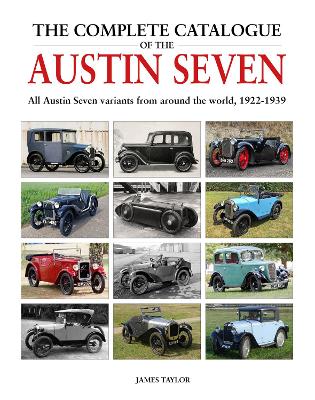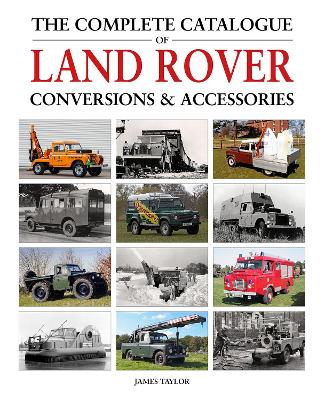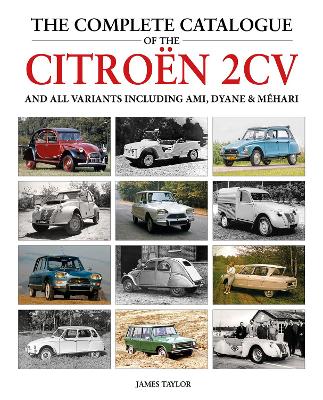Complete Catalogue
3 total works
A century after the Seven’s introduction, the cars have a world-wide following. Part of the attraction is much the same as it always was – simplicity of maintenance and the low cost of ownership. Yet the sheer variety of Sevens produced between 1922 and 1939 as Austin gradually developed the model is also a source of fascination – and of some bewilderment and confusion.
This book aims to give easy access to the key features of each variant of Austin Seven. It follows the vehicle’s evolution from its 1922 origins to 1939 when the last Seven was built.
Yet the book goes far beyond that, giving details of models built outside Britain, coachbuilt cars, military variants and factory competition and record-breaking cars.
The Complete Catalogue of Land Rover Conversions & Accessories
by James Taylor
When the Land Rover entered production in 1948, its manufacturers had designed it as a versatile platform – a basically-equipped vehicle that could be adapted in multiple ways to meet the needs of its owners. The very first example displayed on a motor show stand, at Amsterdam in April 1948, was not a “standard” vehicle at all but had been adapted to turn it into a mobile welder.
In the years that followed, specialist companies flocked to create all kinds of special-purpose adaptations of the basic vehicle, and before long its makers were having to make major decisions about whether they could honour the standard warranty on a Land Rover that had been modified by one of these aftermarket companies. They solved the problem by introducing a Land Rover Approval scheme, under which they would examine and test an example of a conversion and would then agree to honour the vehicle warranty if the conversion met their standards.
Even then, some conversions were put on the market without going through the formal approval scheme, and buyers simply took the associated risk. Between these unauthorised conversions and the factory-approved ones, a vast array of different types was created, and for enthusiasts today these have a very special appeal of their own.
The aim of this book is to catalogue those conversions, to provide both helpful background information and to help in their identification. It cannot claim to be exhaustive, but it is certainly the most complete illustrated catalogue yet compiled on the subject. Illustrated with pictures from the original manufacturers and with many others showing modern survivors, it is a colourful and enjoyable guide to this branch of Land Rover history.
The Complete Catalogue of the Citroen 2CV and all variants including AMI, Dyane & Méhari
by James Taylor
The Citroën 2CV was designed to bring affordable motoring to rural communities in France, but during a production run that spanned more than four decades it achieved far more than that. When already 25 years old, it presented an affordable solution to increasing fuel costs after the first Oil Crisis, and gained a legion of new devotees as a result. To help maintain its sales in this era, Citroën created a number of colourful special editions, which in some cases were specific to just one country, and in others differed between one country and the next.
Along the way, the 2CV also became the foundation for a whole family of other small Citroëns, which were known collectively as the A-series models. The Ami, the Dyane and the Méhari provided simple and affordable passenger transport, and both these and the 2CV itself were further developed to provide light commercial vehicles as well. Meanwhile, licensed overseas assembly plants developed their own derivatives, which added further colour and interest to the 2CV story.
There were far more varieties of these cheap and cheerful Citroëns than most people realise, and this book aims to catalogue them in an easily accessible format. It begins with an examination of the 2CV’s origins in the 1930s and then follows the evolution of the production cars before going on to look at the Ami, Dyane and Méhari models, in every case detailing the multiple special editions as well as the mainstream types. There are special chapters on the commercial derivatives, on the less well-known variants that were built in Europe, and on those created far from the car’s French home. The book closes with a look at the aftermarket conversions and accessories that became an important part of the 2CV story from the earliest times.


